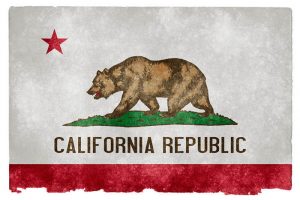California Greenin’
 After the 1969 Santa Barbara oil spill, Californians decided to ditch dirty energy and push for alternative energy sources. Since then, the state’s per capita energy usage has barely budged. Here are just a few of California’s progressive energy initiatives.
After the 1969 Santa Barbara oil spill, Californians decided to ditch dirty energy and push for alternative energy sources. Since then, the state’s per capita energy usage has barely budged. Here are just a few of California’s progressive energy initiatives.
Separating energy usage from profit
In the early 1980s, California became the first state to separate utility profits from increasing sales. Known as decoupling, the move meant that electric companies finally had an incentive to promote energy efficiency by allowing utilities to take a percentage of any energy savings that they help people achieve. Meanwhile, customers reaped the financial benefits of lower energy usage.
Enacting strict appliance-efficiency regulations
In 2009, California became the first state to approve energy-efficiency standards for televisions, but TVs were hardly the first appliance targeted. In 1976, the California Energy Commission created strict efficiency regulations for refrigerators, air conditioners, furnaces and clothes washers. Since manufacturers didn’t want to have to make separate appliances for California, the nation as a whole benefitted.
Updating building codes
California’s building codes have long acted as a blueprint for energy-efficient buildings across the country. Now CALGreen, the state’s green building standards that will go into effect in 2011, will be the most stringent in the nation. The mandatory provisions are expected to reduce greenhouse gas emissions by three million metric tons in 2020.
Harnessing the elements
The California Solar Initiative (CSI) is an unprecedented $3.3 billion ratepayer-funded effort that aims to install 3,000 megawatts (MW) of new grid-connected solar electricity over the next decade. Since launching in 2007, more than 600 MW of solar have been connected to the electric grid at nearly 65,000 customer sites. California also leads the nation in electricity generation from geothermal power, wind power, fuel wood, landfill gas and hydroelectric power.
Curbing global warming emissions
California’s landmark 2006 Global Warming Solutions Act (AB 32) established a first-in-the-world comprehensive program of regulatory and market mechanisms to achieve real, quantifiable, cost-effective reductions of greenhouse gas emissions. The law is expected to reduce carbon emissions in California to 1990 levels by 2020. This November, Californians will vote by ballot measure whether or not to suspend the cutting-edge climate change law. The measure qualified for the ballot after a signature-gathering effort funded by Texas oil companies.
Making cars run cleaner and more efficiently
In 2009, the Environmental Protection Agency granted California a waiver to implement its greenhouse gas emissions standards for cars. The regulations require automakers to cut emissions by nearly a third by 2016, resulting in an increase in fuel efficiency to roughly 35 miles per gallon from the current average of 27. California’s Low-Carbon Fuel Standard also requires fuel providers to reduce the carbon intensity of transportation fuels sold in the state. The new standards will reduce carbon content in all passenger vehicle fuels sold in California by at least 10% by 2020 and more thereafter.

